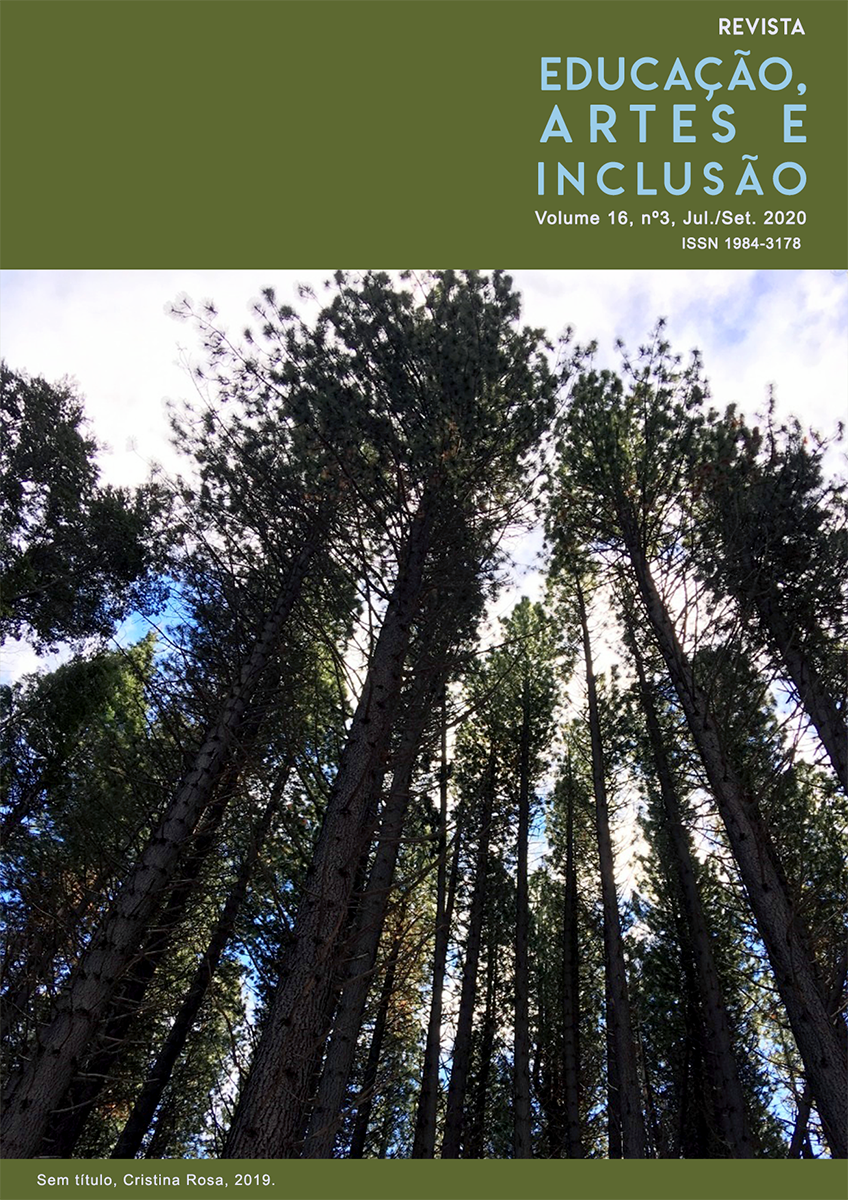Cross-Cultural Narrative through graphic stories In Polisario Refugee Camps
DOI:
https://doi.org/10.5965/198431781632020103Keywords:
Visual Interaction, Graphic Storytelling, Saharawi Refugee CampsAbstract
The Graphic Novel as a development of the last decades and nowadays an independent art form is presented in the context of workshop series within its educational potentials. Graphic story telling workshop series as methology exemplifies us an alternative form of communication beyond textual literacy. This took place within the framework of teacher training workshops in the Polisario refugee camps in Algeria. With the possibilities of the graphic novels, contents from the school environment and the everyday life of the participants were developed by means of art education, in the sense of a reflection of the own work event/ reference, for oneself and others. Drawings and personal stories from everyday life were developed in detail in the form of successive pictures and pictorial elements, sometimes including writing. In a non-verbal and playful way, the reality of life should come to face. In particular, one's own experiential space should be experienced as a source of creativity - personal, original, self-referential should be appreciated and valued. Unconventional forms of communication were generated and established as mutually effective educational methods.Downloads
References
ARENDT, Hannah. Macht und Gewalt. München: Piper, 1970.
EISNER, Will. Graphic Storytelling and Visual Narrative. 9th edition, Tamarac, 2004. Communicating about Graphic Novel – Series of Workshops. Universität Maribor, https://doaj.org/article/d54114147dd3407cb8bcc2cc45402c06. Acess Sept. 23, 2019.
FENNINGER, Erich and WEIDENHOLZER, Josef. Preface. In: FENNINGER, Erich. Von Freiheit träumen. Das Flüchtlingsleben der Westsahrauis. Wien: Mandelbaum, 2001.
GALEANO, Eduardo. Mauern – die Sahraouis dürsten nach Gerechtigkeit. 2006. http://www.oesg.ws/mediaarchiv/1/media/ Dokumente/Mauern_von_Eduardo_Galeano.pdf. Acess march, 20, 2020.
GALEANO, Eduardo. Walls. 2015. http://removethewall.org/walls-eduardo-galeano/ Acess march, 20, 2020.
HERRIGER, Norbert. Empowerment in der sozialen Arbeit. Eine Einführung. Stuttgart: Kohlhammer, 2014.
LAVEN, Rolf. Franz Čižek und die Wiener Jugendkunst. Wien: Schlebrügge, 2006.
MAROTZKI, K., W. and STOETZER, K. The Stories behind the Images (Die Geschichten hinter den Bildern. In: MAROTZK, K and NIESYTO, H. (eds.) Image interpretation and image understanding. Methodical approaches from a social science, art and media education perspective. (Bildinterpretation und Bildverstehen. Methodische Ansätze aus sozialwissenschaftlicher, kunst- und medienpädagogischer Perspektive). Wiesbaden: VS Verlag für Sozialwissenschaften, 2006.
MAYRING, Philipp. Introduction to qualitative social research (Einführung in die qualitative Sozialforschung). Weinheim: Basel, 2002, p. 50-54.
STRÖTER-BENDER, Jutta and WOLTER, Heidrun. The UNESCO World Heritage Site in art lessons. Materials for Primary Schools, Vol.1 (Das Weltkulturerbe der UNESCO im Kunstunterricht. Materialien für die Grundschule, Band 1). Donauwörth, 2005.
UNO RESOLUTION S/RES 2414 (2018) ADOPTED AT THE 8246TH SESSION OF THE SECURITY COUNCIL ON 27.04.2018
WELSCH, W. Use of terms in the sense of Wolfgang Welsch: Transculturality. In: KIRLOSKA-STEINBACH, Monika; DHARAMPAL-FRICK, Gita and FRIELE, Minou (org.): The interculturality debate - leading and controversial terms (Die Interkulturalitätsdebatte – Leit- und Streitbegriffe). Freiburg, 2012.
STAIGER, Michael. Pictures tell a story. On dealing with visual narrativity in German lessons (Bilder erzählen. Zum Umgang mit visueller Narrativität im Deutschunterricht). In: OOMEN-WELKE, Ingelore and STAIGER, Michael (publisher). Images in media, art, literature, language, didactics. Special Edition for Adalbert Wichert (Bilder in Medien, Kunst, Literatur, Sprache, Didaktik. Festschrift für Adalbert Wicher). Fillibach, p. 41-51, 2012.
UHLIG, Bettina. The narrative dimensions of the childlike image concept (Die narrativen Dimensionen des kindlichen Bildkonzepts). In: LIEBER, Gabriele and UHLIG, Bettina (org.). Narration: Transdisciplinary paths to art didactics in context of art education (Narration: Transdisziplinäre Wege zur Kunstdidaktik (Kontext Kunstpädagogik), München. p. 175-187, 2016.
Downloads
Published
How to Cite
Issue
Section
License
Copyright Statement
The Educação, Artes e Inclusão is a journal that follows the Free Access Policy. The articles published by the journal are free of charge, intended for educational and non-commercial applications. The articles whose authors are identified represent the expression from the point of view of their authors and not the official position of the Educação, Artes e Inclusão Journal or the Educação, Artes e Inclusão Research Group.
Authors who publish in this journal agree to the following terms:
(A) Authors retain the copyright and grant the journal the right of first publication, with the work simultaneously licensed under the Creative Commons Attribution License which allows the sharing of the work with acknowledgment of authorship and initial publication in this magazine.
(B) Authors are authorized to take additional contracts separately, for non-exclusive distribution of the version of the work published in this journal (eg publish in institutional repository or as a book chapter), with acknowledgment of authorship and initial publication in this magazine.
(C) This journal provides public access to all of its content, as this allows for greater visibility and scope of published articles and reviews. For more information on this approach, visit the Public Knowledge Project.
This journal is licensed under a Creative Commons Attribution-NonCommercial-ShareAlike 4.0 International License. This license allows others to remix, adapt and create from your work for non-commercial purposes, and although new work must give you due credit and cannot be used for business purposes, users do not have to license such derivative works under the same terms.



